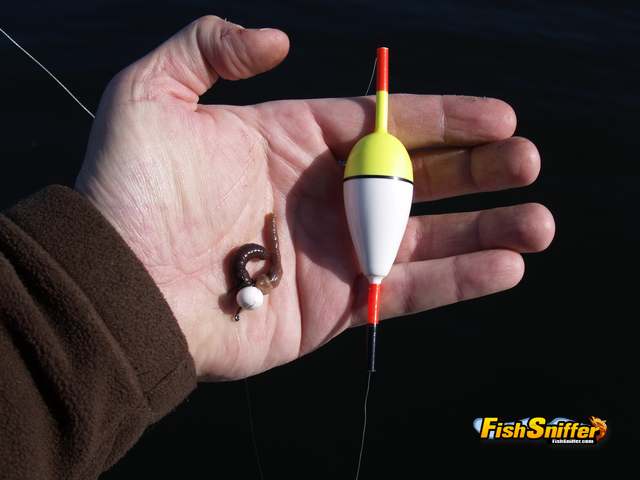During the winter and early spring month bank anglers often compete with boaters and at times surpass boaters success when it comes to tempting strikes from reservoir trout.
Trout tend to gravitate to the shoreline during the cold months, putting them on a collision course with the offering of bank anglers. At time boaters struggle to hook these fish simply because they can effectively work the near shore areas that hold the majority of the fish.
With these facts in mind let’s take a look at the best options for bank anglers fishing the February 14 NTAC event at San Pablo Reservior.
When bank fishing you’ll be doing a lot of casting. This makes spinning tackle the best choice. Since you’ll generally be using weights that range from an eighth of an ounce to a half ounce, a light to medium light rod is a good all around choice.
In terms of reels, the The first requirement is a smooth drag. At times 4 pound leader material is required to draw strikes. When fighting good sized trout on line that light you don’t want the drag to stick at all when the fish runs. If it does the leader will likely snap. The reel should also have a high gear ratio. The gear ratio refers to the number of times the line is wrapped around the spool for each revolution of the reel handle. At times trout will run straight toward you at the hookset. When that happens a high gear ratio allows you to keep pace with the fish, preventing slack from forming in the line. A 5 to 1 ratio is ideal.
Targeting Trout Holding Near The Bottom
Trout spend a lot of time holding near the bottom. As a result the basic bait fishing set up is the sliding sinker rig. To construct sliding sinker rigs that meet a number of different situations and conditions you’ll need a selection of hooks, weights, beads and swivels along with a with some fluorocarbon leader material.
I keep my various bait fishing supplies in a plastic compartment box. I like to have both bait holder and octopus hooks on hand in sizes 8, 10 and 12. It is important to use super sharp hooks Gamakatsu hooks are my favorite brand, but they are a little pricy. You can save a little money and use Eagle Claw Lazar Sharp hooks without compromising much in the way of performance.
Egg sinkers are the most popular choice among bait anglers, but I prefer to use the tapered bullet sinkers popular among bass anglers. I find that egg sinkers with their fat round shape tend to hang up in the rocks more than the tapered bullet weight and they also produce more resistance as they move through the water. A selection of sinkers from 1/4 to 1/2 ounce will cover most situations, but I like to add a few in the 1/8 and 3/4 ounce sizes as well.
For a swivel go with a black or anodized model in size No. 1. As for beads, simple plastic ones with an eighth inch diameter work just fine and their color isn’t a factor.
Once you’ve gathered all the necessary components, putting together a rig is simple. The first step is to pass the line of your spinning rod through one of your sinkers going in from the narrow end and out through the wide end. Next pass your line through a bead and then tie on a swivel using an improved clinch knot. The bead acts as a spacer between the weight and the swivel, protecting the integrity of the knot. To the other end of the swivel attach an 18 to 36 inch section of fluorocarbon leader with an improved clinch knot. The final step is to tie a hook to the end of the leader using a palomar knot.
There are several popular and productive baits and bait combinations for tempting trout including inflated worms, Pautzke Fire Bait, PowerBait and Pautzke Salmon Eggs teamed with marshmallows. The best baits all have one thing in common, they float up off the bottom. Trout will seldom pick a bait directly off the bottom. You want a bait that floats up and away from grass and debris, so that a cruising trout can find it easily.
Suspended Trout
If you are a bank angler that wants to suspend baits just beneath the surface or in the middle depths, employing slip bobbers is the key.
If you’ve never set up a slip bobber rig before they look sort of complicated, but they really aren’t. To rig up start with a light spinning rod spooled with 6 or 8-pound test. Thread your line through string bobber stop. Then thread on a 1/8-inch plastic bead followed by your bobber. Next, below the bobber knot on a small black swivel. Above the swivel place one or two large split shot on the line. To the swivel attached a 30-inch 6 lb test fluorocarbon leader. Tie No. 8 or 10 wide gap short shank hook to the business end of the leader.
Before you bait the hook, adjust the bobber stop for a desired depth. You can reel the string bobber stop right through the rod’s guides and into the reel and you’ll still be able to cast. When the bobber hits the water, your line will slide down through it until the bobber stop wedges itself against the bead atop the bobber. As a result your offering will be suspended below the bobber.
Most of the time I bait up with salmon eggs, worms or small minnows. Floating dough baits don’t work very well with this rig because they tend to float up and tangle the leader.


